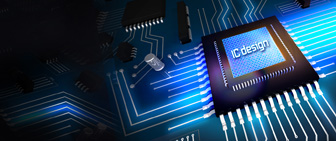Vivo has launched its X300 flagship series and the upgraded OriginOS 6 operating system, marking a milestone in research and innovation as the company enters its 30th anniversary in 2025. As the global smartphone market matures and demand growth slows, Vivo is reshaping its strategy—placing greater emphasis on ecosystem integration and AI development rather than hardware alone.
On October 16, 2025, Huawei launched several new products in Taiwan, including the WATCH GT 6 Pro, GT 6, and FreeBuds SE 4 ANC. Yong Hai, general manager of Xunwei Technology, Huawei's exclusive distributor in Taiwan, said that Huawei has continued to strengthen its investment in technological innovation and product research and development, achieving significant results in its all-scenario smart life strategy, which covers five major areas of daily living. Huawei plans to further expand its presence in Taiwan's smart wearable market.
Airoha Technology has continued to secure new collaboration opportunities in the international telecom market in 2025, with some of its previously developed markets now entering mass production and shipment phases, driving steady growth in its overall revenue. The company has also integrated MediaTek's Wi-Fi chips into its solutions.
The Taiwan Innotech Expo (TIE) opened on October 16, spotlighting over 1,000 innovative technologies with a strong focus on AI. The event continues the theme of major 2025 exhibitions by emphasizing Taiwan's critical role in the global technology value chain.
Vivo unveiled its new flagship X300 series of smartphones this week, followed by the introduction of its new OriginOS 6 operating system, which adopts a two-pronged artificial intelligence strategy to serve both global and domestic Chinese markets.
Taiwan's leading telecom operators posted strong operational performances in September 2025, driven by the sales surge from the new iPhone 17 launch, ongoing 5G user upgrades, and rising ARPU (average revenue per user). This momentum lifted revenues and profits across the board.
The Ministry of Digital Affairs (MODA) is actively advancing low Earth orbit (LEO) satellite business development, with Minister Yi-Jing Lin revealing on October 15 at the Legislative Yuan's Transportation Committee that aside from Chunghwa Telecom (CHT)'s OneWeb, talks are also underway for collaboration with Amazon Web Services' (AWS) LEO satellite service Kuiper. Far EasTone Telecommunications (FET) is likely to become Kuiper's commercial operator in Taiwan.
Apple has announced its latest system-on-chip (SoC), the M5, marking a major step forward in the company's in-house silicon roadmap. Built on third-generation 3nm process technology, the M5 powers Apple's newest 14-inch MacBook Pro, iPad Pro, and Apple Vision Pro, delivering notable gains in graphics, CPU efficiency, and on-device AI processing.
Apple is lobbying the Indian government to amend income tax rules that could otherwise impose billions of dollars in taxes on its iPhone operations, sources familiar with the matter told Reuters. The issue centers on the machinery Apple provides to its contract manufacturers, including Foxconn and Tata, to assemble iPhones locally.
China Mobile announced at its global partner conference in Guangzhou that it plans to exclusively use domestically produced chips across the country's largest artificial intelligence (AI) computing network by 2028. The move seeks to accelerate AI autonomy and reduce reliance on foreign technology amid growing geopolitical tensions.
A seismic shift is underway in the global semiconductor industry. After a decade as the undisputed top client for chipmaking giant TSMC, Apple is on the verge of being unseated by Nvidia, whose business is skyrocketing amid the artificial intelligence boom.
More coverage



